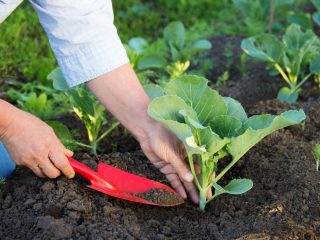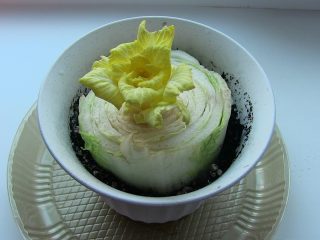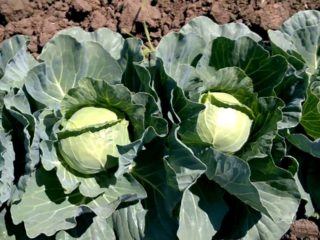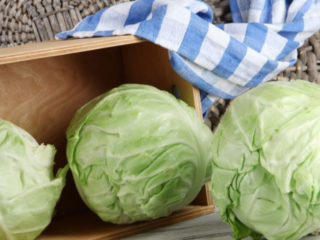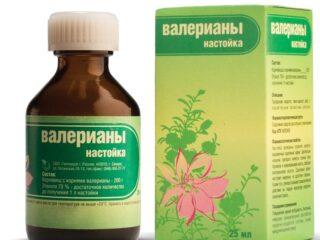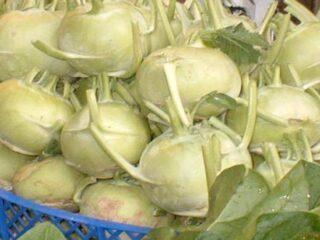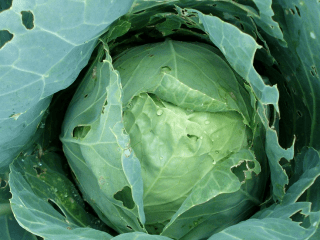Content
It is worth feeding Chinese cabbage regularly, up to 3-4 times after planting. The last time fertilizer is applied is two weeks before harvest. The optimal scheme is alternating mineral fertilizers with organic ones. You can also use biological fertilizers - the most effective and affordable ones are described in this article.
Is it necessary to fertilize Chinese cabbage?
Fertilizers for Chinese cabbage must be applied without fail. Thanks to this, plants quickly gain green mass, get sick less, and form large heads of cabbage, which has a positive effect on both yield and taste.
Fertilizers must contain nitrogen, potassium and phosphorus. These are the main elements that perform vital functions:
- Nitrogen is present in protein compounds, ensures the processes of cell division and growth, due to which leaves actively grow.
- Phosphorus promotes the formation of the root system and participates in metabolic processes.
- Potassium also strengthens roots, and also stimulates flowering and ovary formation. Therefore, it is actively added at the budding stage.
You also need to feed Chinese cabbage with microelements. Boron activates the formation of ovaries, and iodine helps in the absorption of nitrogen, due to which the bushes grow faster.
Signs of micronutrient deficiency
Chinese cabbage needs all macro- and microelements. But there are also situations when it is necessary to feed the crop with specific substances. To do this, you need to learn how to determine the deficiency of one or another element by external signs.
Element deficiency | External signs |
Nitrogen (N) | developmental delay; · yellow, pale spots on the leaves; · the leaf blades are bluish below; · noticeable splashes of red; · heads of cabbage are small. |
Phosphorus (P) | · foliage is dark green, bluish; petioles violet or purple; · some leaves are covered with black spots; Delayed flowering. |
Potassium (K) | · foliage looks as if burned; · young leaves become dull; · leaf blades become bluish, “bronze”; · curl around the edges; Delayed flowering. |
Sulfur (S) | · yellow spots appear on the leaves; · The veins take on a purple tint. |
Calcium (Ca) | · Young foliage becomes yellowish-green at the edges. |
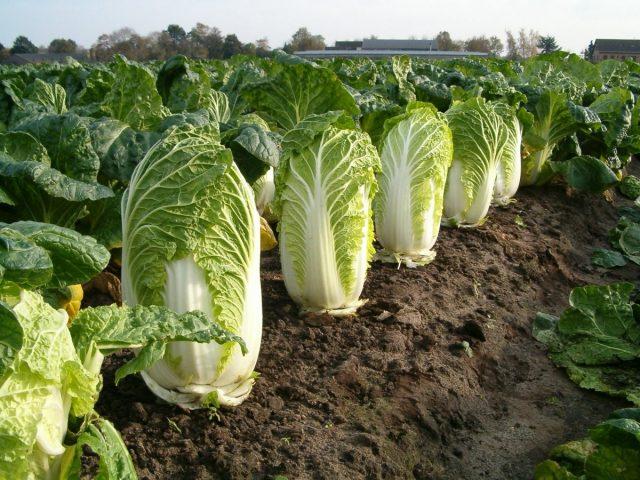
To get a good harvest, the crop needs to be fed regularly.
How to fertilize Chinese cabbage for head tying
Beijing cabbage needs fertilizing to form heads. Experienced summer residents recommend applying balanced complex fertilizers, as well as feeding the plants with liquid organic matter. The main types of drugs and dosages are presented below.
Mineral fertilizers
You can feed Chinese cabbage to form a head of cabbage with mineral fertilizers.These are inorganic (less often organic) compounds that are produced in the form of powder or granules, highly soluble in water. They quickly penetrate the soil, enter the roots and then move through the vascular system of plants, saturating the tissues with nutrients.
Among the most important mineral fertilizers that need to be fed to Chinese cabbage are:
- Urea is an organic compound that is a source of nitrogen. It should be applied a few days after transplanting the seedlings into open ground. To properly feed, you need to dilute 20 g in 10 liters of water.
- Ammonium nitrate is an inorganic source of nitrogen. It dissolves well in water and quickly penetrates the root system of the plant. To feed, you need to dissolve 20 g in 10 l. Then they start watering.
The second time after transplanting, Chinese cabbage should be fed with phosphorus and potassium compounds. You can use, for example, superphosphate (40 g per 10 l) and potassium salt (25 g per 10 l) or superphosphate with potassium sulfate (30 g per 10 l). Instead of these drugs, it is allowed to feed with complex fertilizers, for example, azofoska (30 g per 10 l).
Another option is to use ready-made drugs with a balanced composition. This can be “Ideal”, “Baikal”, “Rastvorin” and other means. You need to feed according to the instructions, carefully observing the specified amount.

Superphosphate and potassium compounds promote the formation of the ovary
Organic fertilizers
After planting in the ground and throughout the season, you can feed Chinese cabbage with organic matter. The best option is to alternate it with mineral fertilizers, maintaining an interval of 15-20 days. Among the most popular remedies are mullein and dung.Based on them, an aqueous infusion is prepared for 10-15 days. The instructions are:
- Take the raw material and dilute it five times with water.
- Let stand indoors for 10-12 days.
- Stir occasionally.
- Then dilute with water 10 times (for mullein) or 15-20 times (for litter).
- Feed Chinese cabbage by pouring the solution under the root.
You can also buy organic fertilizer such as potassium humate in a store for summer residents. It is produced in the form of a concentrate, which is diluted in water (10 ml per 1 l). Feeding can be done in two ways - by spraying the leaves and watering at the root.
They can be used to feed the soil in the fall in preparation for planting next spring. Raw materials are embedded in the ground in an amount of 8-10 kg per 1 m2 and left to rot.
Biological fertilizers
You can also feed Chinese cabbage for growth and setting of heads with biological fertilizers. They are aqueous infusions or decoctions based on waste products of organisms. Popular means include:
- An infusion of freshly cut weeds, especially young nettle. The plants are mowed before the end of flowering, chopped with a shovel and filled with water in a 1:1 ratio. Leave for 5-7 days, stir occasionally. Then filter and dilute with water three more times. You can feed the infusion directly at the root.
- Take a banana peel, add a little water and soak for a day. Then you need to feed the Chinese cabbage with the resulting infusion. You can also puree the peels and place them in your garden bed as mulch.
- Take 10 g of fresh or dry yeast, dissolve it in 10 liters of warm water and add 2 tbsp. l. Sahara. Stir and leave in a warm place for a day to ferment.You can feed Chinese cabbage with this solution directly at the root, the liquid consumption is 0.8-1 liters per bush.
- Instead of yeast, you can take a loaf of any bread and soak 10 liters of water in a bucket. Leave for a day, then stir and add pharmaceutical iodine (30 drops). Next, you need to dilute it three times with water and feed it at the root. The solution is suitable for use on acidic soil.
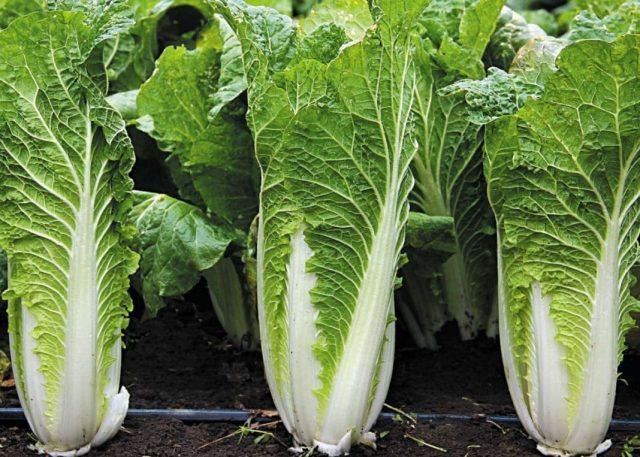
Thanks to regular fertilizing, the crop will give a good harvest
Timing and rules for applying fertilizers
Chinese cabbage should be fed several times per season (up to 3-4). The standard application schedule is as follows:
- When planting in the ground.
- In mid-June.
- At the beginning of July.
- Two weeks before harvest.
Along with the timing, it is important to follow the basic rules for applying fertilizers:
- Since precise dosage is required, powders and granules are measured on a kitchen scale or in a measuring cup.
- Fertilizers must be applied regularly, and the composition must be balanced.
- In order for nutrients to penetrate quickly to the roots of Chinese cabbage, the plantings should be watered.
- For irrigation and fertilization, use only settled water - it is prepared for at least 12 hours.
Soil treatment after harvest
It is important to feed Chinese cabbage throughout the season. It actively consumes nutrients. From one hundred square meters, the crop takes about 2 kg of nitrogen, 1.5 kg of potassium and 130 g of phosphorus. Obviously, due to such volumes of consumption, the soil is quickly depleted. Therefore, it must be fertilized after growing Chinese cabbage.
First, the crop is harvested, then all plant debris is removed. Next you need to feed the soil. In September, the soil is dug up and humus or compost is added in an amount of 10 kg per 1 m2. If there is a lot of clay in the soil, add 2-5 kg of sawdust or sand to the same area.
Common mistakes
Peking cabbage needs to be fed correctly to ensure normal growth and productivity. This is not difficult to do, although in practice gardeners often make mistakes. Among the most common are the following:
- Sometimes gardeners believe that the more fertilizer they add, the better. In fact, it is necessary to carefully observe the dosage, remembering that overfeeding is worse compared to underfeeding.
- If Chinese cabbage grows on fertile soil, it should be fed with the same fertilizers, but the concentration is reduced by 1.5 times.
- Before and after fertilizing, the soil is thoroughly loosened to provide access to the roots of both oxygen and the nutrient solution itself.
- It is better to water and spray in the late evening. If you feed at the root, you need to carefully direct it to the root zone. If the solution gets on the leaves, they should be rinsed immediately with a stream of water.
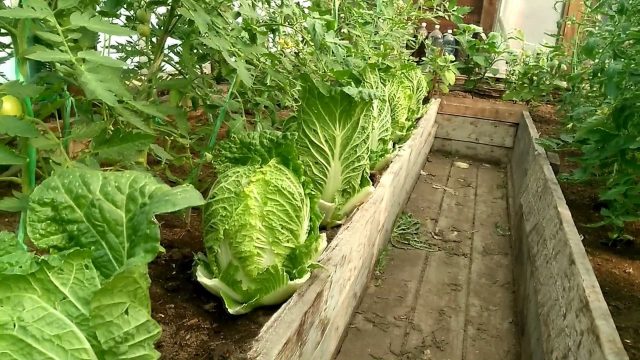
In order not to overfeed the plants, you must carefully follow the dosage according to the instructions.
Conclusion
Feeding Chinese cabbage is not difficult, but the main thing is to follow the regime of adding nutrients. The plant is responsive to fertilizers; the plantings form heads of cabbage together, which has a good effect on productivity. To do this, it is recommended to regularly give complex and organic formulations.
